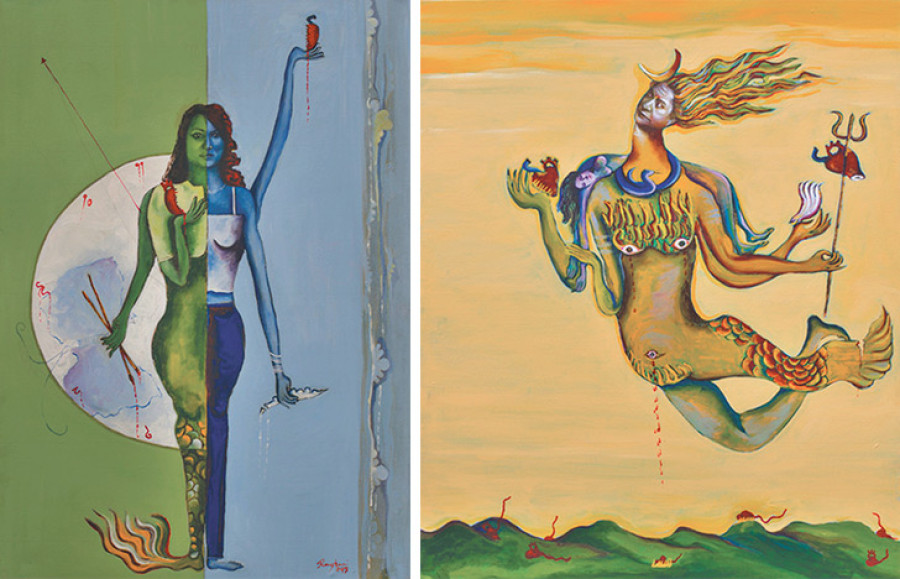Entertainment
Journey to the End of the Night
The fact that we, as humans, dream proves that our waking life remains unfulfilled. By dreaming, we can become who we could never become in reality and thus fulfill our deepest needs.
Ishwar Kadel
The fact that we, as humans, dream proves that our waking life remains unfulfilled. By dreaming, we can become who we could never become in reality and thus fulfill our deepest needs.
We could fly and reach the celestial bodies, but, as one of Ragini Upadhyay’ s new paintings suggests to me, perhaps our dreams don’t have the capacity to fly beyond the sheltering sky. Our dreams are anchored by our premonitions, just like the kite that is steered by its spool—there can be comfort in this thought, yet there is a strand of uncanny that can haunt the thinker.
Ragini Upadhyay, one of the pioneers of the Nepali avant-garde art movement, is working on a new series called ‘My tragedy’. Her latest surrealist paintings, moored in eastern thought and spirituality, can evoke comparison to Salvador Dali, and give the eeriness of Jean Michel Basquiat. Like any good work of art, Upadhyay’s paintings invite multiple interpretations, and my understanding of her work is just one facet among endless possibilities.
Ardhanarishwara, Shiva’s androgynous avatar, according to Hindu myths and legend, represents the unification of diverging souls. Upadhyay’s depiction, however, takes a sinister look as Shiva becomes a woman kidnapper who is slowly transforming into a fish. Upadhyay has mastered the art of juxtaposing ideas and images that could give rise to various, even contradictory ideas.
Upadhyay, through her paintings, takes the viewer to the end of the night, after which there will be no more sun, no more hope. Her brush strokes are finely tuned to the perils of times, to the acme of inhumanity, and are emotively presented. Upadhyay proves that the role of an artist is to find beauty even at the worst of times.
Two halves of two women stand next to each other to create a whole. They have divided the heart and each of them hold a piece, but they never bring it together to be unified, to complete each other. One is green, the other is blue, perhaps reminding us of the earth and the sky. There is a clock in the earth, but not in the sky. Earthly creatures are bound by their morality, but the heaven above is timeless, transfixed since the day it was created. The moon appears the same to us as it did to the first human. In contrast, life on earth is always changing—there is a butterfly which has started to fade. Could it be that the artist is telling us that the earth after having metamorphosed for a million years has arrived at its final stage? After all, the clock is about to hit the final hour and the clock is no longer circular to continue on its cycle.
The three samplings of the paintings from her forthcoming selection are beautiful, but also perplexing. The recurring motif of fish/mermaid in all of her paintings goes unexplained. Maybe when viewed along with the entire collection, there will be a string to follow to make sense of the recurring theme. But regardless of the explanation, there is already enough reason to wait for her exhibition.




 8.12°C Kathmandu
8.12°C Kathmandu










